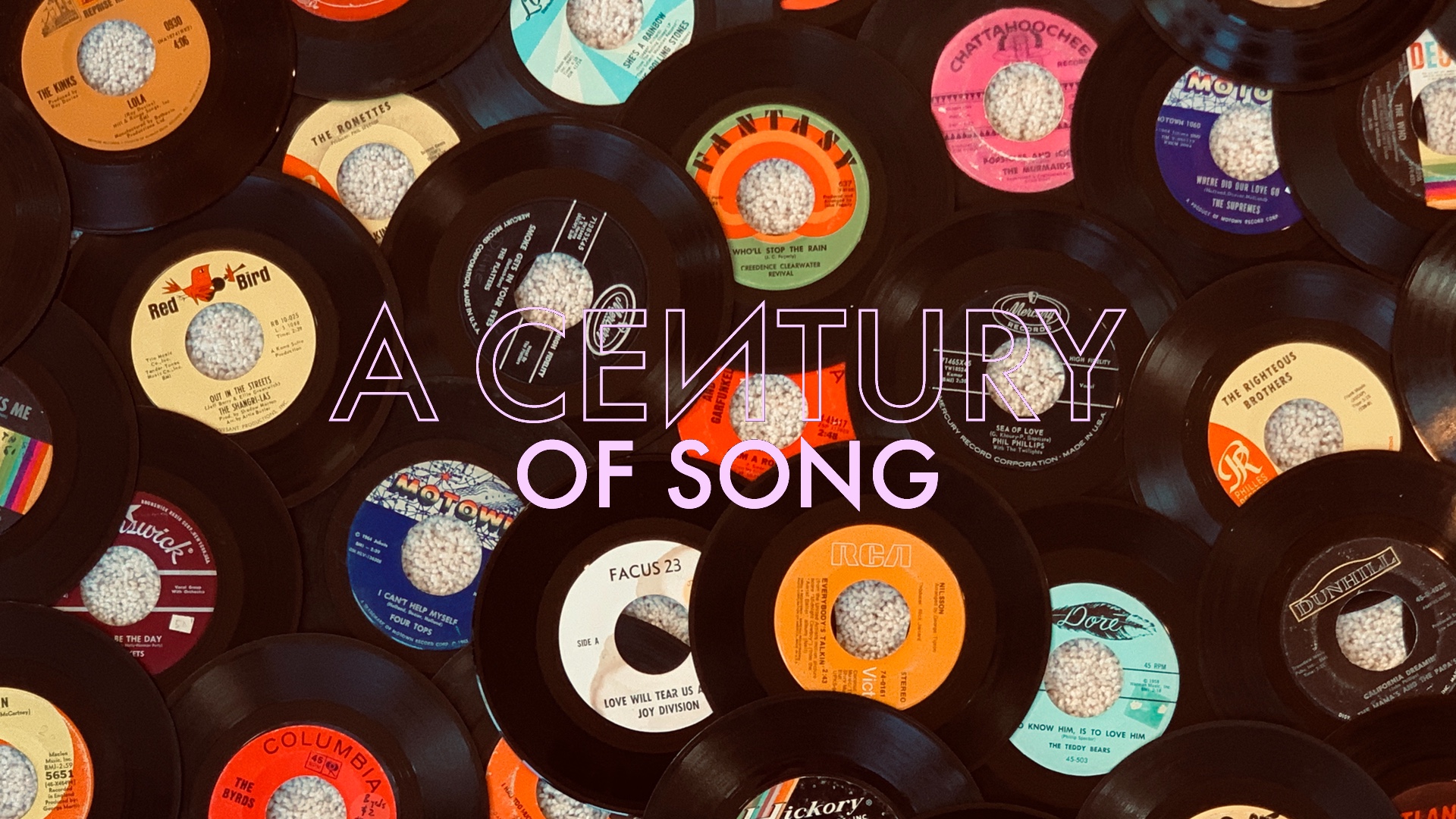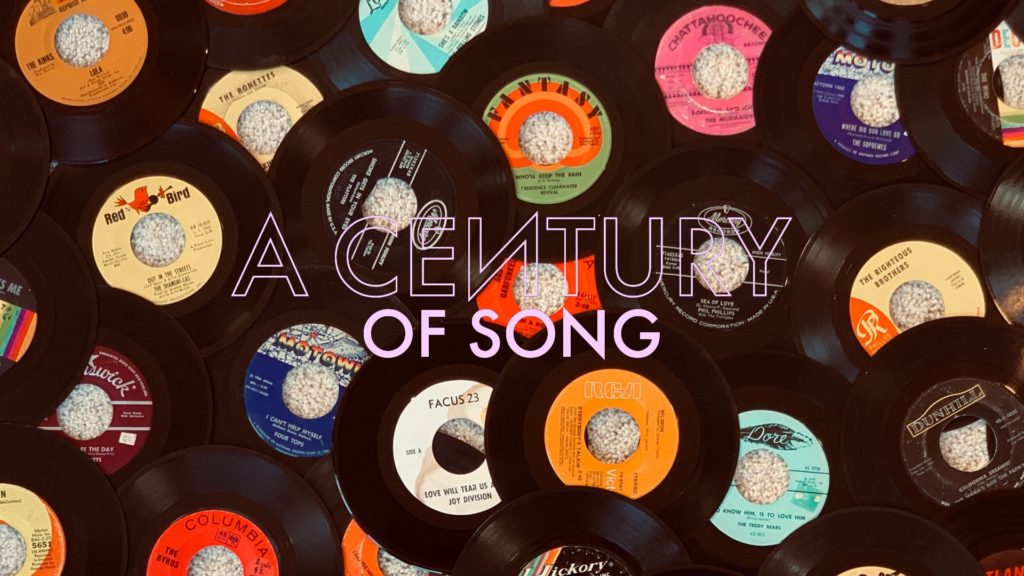
A Century of Song is an attempt to summarize 100 years of popular music through 1000 carefully chosen tracks. Included within this list are landmark singles, stellar album cuts, huge hits, hidden gems, and more than a few personal favorites. Read the introduction for the project here, and enjoy the embedded videos and Spotify playlist.
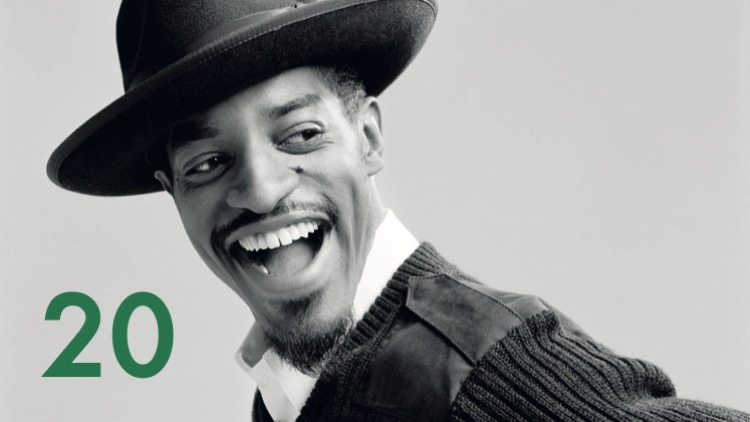

Somehow, in a decade that was in large part defined by indie pop, the best exemplar of the genre was crafted by one half of a hip-hop duo. Of course, to anyone paying attention, by 2003 OutKast had proven that their creativity was far too boundless to be confined to a narrow definition of genre. On that year’s double album, Speakerboxxx/The Love Below, André 3000 and Big Boi largely worked apart, with each crafting a half that reflected their own talents and eccentricities.
Whether fairly or not, André had already been labeled as the group’s visionary by the time of the album’s release. Further supporting this characterization, his disc, The Love Below, was the more stylistically divergent of the two – not to take away from the forward-thinking approach of Big Boi’s Speakerboxxx – trading in Prince-inspired soul, futuristic funk, electro pop, and jazz. Its first single didn’t fit neatly into any of those categories but would ultimately become the biggest crossover hit of its time.
You’d have to be one ice cold son of a bitch to not love “Hey Ya!” upon first listen. Quite possibly the most gleefully effervescent four minutes in the history of recorded music, the song is a marvel of impossibly endearing hooks and homespun charm. Written, produced, and mostly recorded by André 3000 himself, the track fused classic songwriting with modernistic production flourishes – creating something that was inextricably linked to its own time, but that was almost immediately pegged as timeless.
That timelessness was reinforced by the song’s virtually unprecedented cross-generational appeal. “Hey Ya!” would hit the top ten in nearly every country that bothered tracking such things, and it ultimately helped to propel an unabashedly weird double album to nearly unheard-of sales figures for a hip-hop group. Of course, that massive popularity led to the only valid criticism of the phenomenon that was “Hey Ya!”: the fact that you could hardly go anywhere within several months of its release without hearing the song.
Scanning the user reviews on the online database RateYourMusic, the overplayed-ness of “Hey Ya!” is a somewhat recurring cause of discussion. Despite its ubiquitous nature, I’ve never grown tired of ‘Hey Ya!’ – not even close, really. The other common speaking point, however, is that the song serves as a great unifier. The fact that so many people – rockists and hip-hop fans, music nerds and casual listeners, introverts and extroverts, kids and their grandparents – could rally around a song in a weird time signature, by a mostly one-man-band, while singing, dancing, and quoting the numerous phrases that it introduced into the vernacular, is pretty damned remarkable.
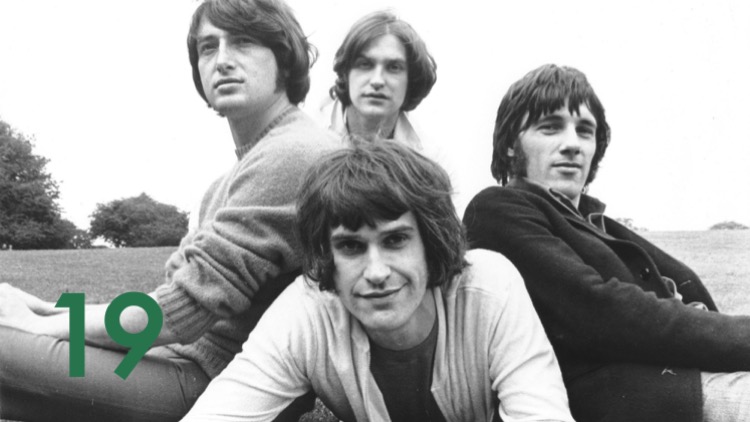

The last time we covered a song that took place at a London Underground terminal, it was The Jam’s harrowing “Down In the Tube Station at Midnight” (#145). In sharp contrast, the scene depicted in Ray Davies’ masterpiece is tranquil: a bliss that is beautifully captured in one of the finest pieces of baroque pop ever committed to tape.
By 1967, The Kinks had effectively doubled down on their efforts as a studio act, having been temporarily banned from touring in the United States. The previous eighteen months had found Ray Davies’ songwriting turning in a far more nuanced direction than the thrashing hits that had initially landed the band at the top of the charts on both sides of the Atlantic. With each new single, he came closer to perfecting the sound that would reach its apex on the stirring “Waterloo Sunset.”
Davies’ narrator in “Waterloo Sunset” finds his bliss in the most mundane of places: “people watching” at the busy terminus that gives the song its name. He doesn’t require the thrill of the young lovers – Terry and Julie – who he observes every Friday night. A self-described loner, his joy instead comes in the comfort of the titular scene: a beautiful vignette that the “millions of people, swarming like flies” are far too preoccupied to appreciate.
Davies would further explore these themes in the pastoral tracks of 1968’s brilliant The Kinks Are the Village Green Preservation Society. However, juxtaposing a sense of self-actualization with the busy urban setting of “Waterloo Sunset” somehow makes it all the more affecting. So too does the soft touch of the track’s gracefully descending melody, and the lush harmonies that make for the most gorgeous moments in The Kinks’ catalog.
In a recent series of podcasts, I opined about my firm conviction that The Kinks were the one band of the British Invasion that could possibly hold a candle to the mighty Beatles. Their catalog from 1964-1971 is a virtually flawless display of range and depth, seemingly perpetually in need of rediscovery by the wider world. Out of all of the glorious moments in that body of work, “Waterloo Sunset” stands as the perfectly realized pinnacle.
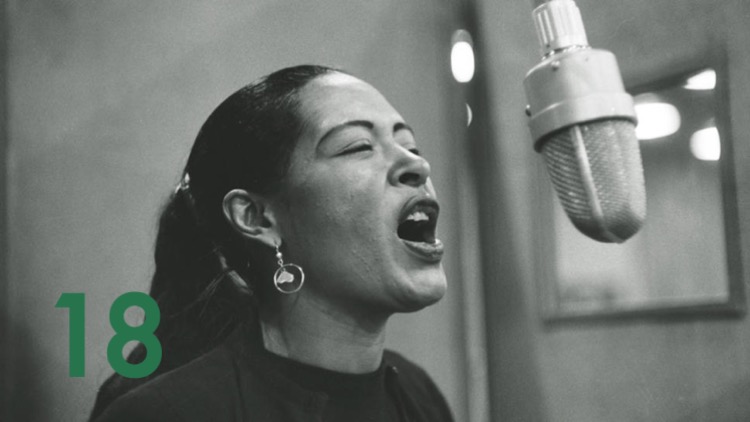

For all the excitement of the swing era, and the can-do spirit of the New Deal, America in the 1930s was still a land of perverse injustice. The economic calamity of the Great Depression only heightened racial tensions nationwide, and the revived Ku Klux Klan that had reemerged in the 1920s continued its unabated spread, as competition over jobs bred intense resentment across racial lines.
It was under this context that Billie Holiday made her greatest contribution to the American canon with this adaptation of a poem by Abel Meerpool – a New York schoolteacher. Meerpool had been inspired to write “Strange Fruit” upon seeing a photograph of the lynching of Abram Smith and Thomas Shipp. In three devastatingly blunt verses, he crafted a harrowing, unforgettable hellscape:
Southern trees bear a strange fruit
Blood on the leaves and blood at the root
Black bodies swinging in the Southern breeze
Strange fruit hanging from the poplar trees
Pastoral scene of the gallant South
The bulging eyes and the twisted mouth
Scent of magnolias sweet and fresh
Then the sudden smell of burning flesh
Here is a fruit for the crows to pluck
For the rain to gather, for the wind to suck
For the sun to rot, for the tree to drop
Here is a strange and bitter crop
“Strange Fruit” drew wildly mixed reactions when Holiday began performing it in 1939. Though she feared retaliation for its powerful message, the song captivated audiences; witnesses claimed that one could have heard a pin drop as the song reached its conclusion. Even when its performance became expected as part of Holiday’s set list, it still possessed the capacity to shock.
Holiday’s record label, Columbia, refused to release the song. A one-single deal with Commodore – an “alternative jazz” label – ultimately allowed “Strange Fruit” to reach the record buying public in the spring of 1939. Many of those listeners were appalled at the song’s uncompromising directness, and its drastic, unexpected divergence from Holiday’s previous hit recordings.
The tepid commercial reception hardly fazed Holiday. With “Strange Fruit,” she wasn’t out to make a hit. She intended to make a statement, and in the process, she made art. The history of American popular music would change as a result of her courageous defiance. There is no song in that history that is more brave, bold, or important.
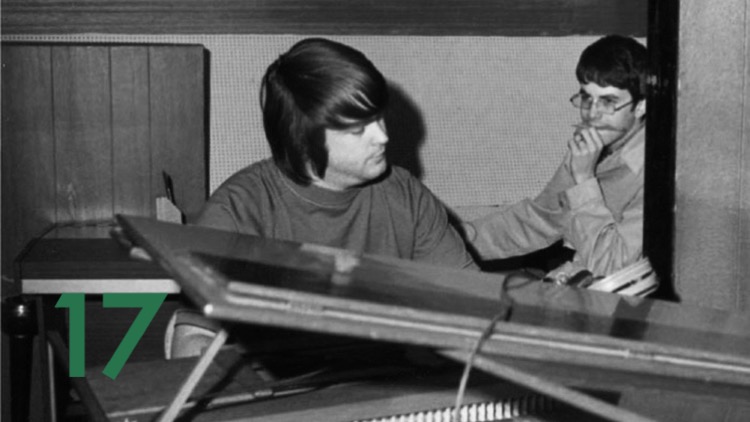

In 1966, Brian Wilson released his masterpiece, Pet Sounds – the finest album of pop music’s golden age. During its creation, he became fascinated by the possibilities of what he referred to as “modular” recording: a process in which songs were composed by connecting loosely related pieces that he called “feels.” The first fruits of this labor yielded the otherworldly pop smash “Good Vibrations” (#25), but Wilson had his sights set on something higher: namely, the creation of what he would soon begin calling a “teenage symphony to God.”
From late-1966 through the first months of 1967, Wilson worked obsessively on a project that he dubbed SMiLE. Enlisting the same studio pros of the Wrecking Crew that had brought Pet Sounds to life, the music that he recorded during these sessions was dense, brilliant, and almost entirely without precedent. To bring his vision to completion, Wilson turned to the young hotshot singer/songwriter/multi-instrumentalist Van Dyke Parks to craft lyrics that would similarly push the envelope.
Within Parks’ labyrinthine verses for “Surf’s Up” lies a vague but compelling message: something about the lost dream of the sixties, an end of innocence, a reckoning. Individual lines are virtually inscrutable, but collectively, they paint a wholly engrossing and ominous portrait that stands worlds apart from the “fun in the sun” California lifestyle that The Beach Boys had become ambassadors for, thanks to their string of hit singles during the first half of the decade.
Individually, the music and lyrics of “Surf’s Up” are remarkable. In conjunction, they are transcendent. In particular, Wilson’s recitation of Parks’ recurring “columnated ruins domino” refrain – which a befuddled Mike Love reportedly hated – is nothing short of breathtaking. Gut punches abound throughout, but it’s the middle section that cuts the deepest:
Dove nested towers the hour was
Strike the street quicksilver moon
Carriage across the fog
Two-Step to lamp lights cellar tune
The laughs come hard in Auld Lang Syne
The glass was raised, the fired rose
The fullness of the wine, the dim last toasting
While at port adieu or die
A choke of grief heart hardened I
Beyond belief a broken man too tough to cry
By the time the SMiLE project collapsed in the spring of 1967, Brian Wilson himself was that broken man. Compromised by a dangerous combination of drug use and undiagnosed schizoaffective disorder, surrounded by hangers-on, and facing doubt from both his record label and his bandmates, Wilson pulled the plug on his teenage symphony.
“Surf’s Up” first reached the public when a reworked version of the song became the title track to The Beach Boys’ 1971 album. Bootleg recordings – including several arresting versions of Wilson alone at the piano – would emerge in the ensuing decades. The song appeared again in 2004, as the centerpiece to Wilson’s triumphantly resurrected, solo re-recording of SMiLE. However, it is the version that appeared on the 2011 compilation, The Smile Sessions – a version cobbled together from various 1966-67 recordings – that stands as the definitive take: a masterful, devastating song of unparalleled beauty.
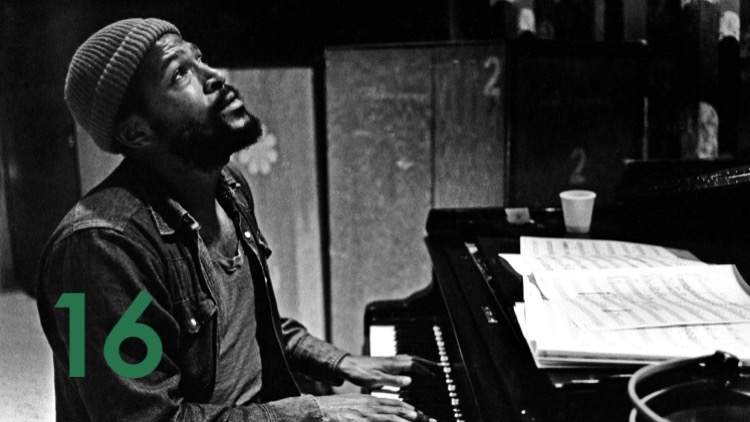

Throughout the sixties, it would have been reasonable to refer to Motown head Berry Gordy as a man with a golden ear. The venerable Detroit label released many of the decade’s most indelible singles, and rarely did Gordy’s instincts for a hit let him down. Working with a large cast of talented producers, songwriters, studio musicians, and vocalists, Motown spent most of the sixties on an unstoppable roll, and Berry Gordy stood at the center of its success.
In a rare moment of poor artistic judgment, Gordy balked when Marvin Gaye – already one of Motown’s biggest stars – presented him with his self-produced single, “What’s Going On,” in late 1970. In fact, Gordy notoriously went so far as to refer to the song as “the worst thing I ever heard in my life.” It was only with Gaye’s threat to strike that Gordy relented, ultimately agreeing to release the track in early 1971 – albeit in an initially limited pressing.
Today, it’s difficult to understand Gordy’s hesitation in releasing such a perfectly realized song. In fact, one could easily speculate that – instead of opposition to the song itself – Gordy was primarily concerned about wading into the waters of protest music. After all, this was still the early-1970s, and much of Motown’s unprecedented success for a Black-owned label was due to its enormous appeal to white audiences. Gordy had a good thing going, and he would’ve been foolish to risk a winning formula by alienating the record-buying public with a political statement. He may have loved music, but Berry Gordy was a businessman first and foremost.
Marvin Gaye had little concern for such matters. Having already achieved rarified success with a string of hit singles, he now set his sights on capturing the urgency of the moment within his music. The Civil Rights movement had deeply fragmented in the wake of the murder of Martin Luther King, Jr.; Black soldiers were being sent to the front lines in Vietnam; cities had become powder kegs under the weight of decaying infrastructure, police brutality, and a lack of economic opportunity. In three brief verses, Gaye would address all of these things and more. In turn, the man with arguably the greatest voice of his generation would become a spokesman for said generation.
While Marvin Gaye’s performance in “What’s Going On” is one of aching beauty, it is matched by the track’s gloriously lush instrumentation. Balancing between the smooth sounds of Motown’s prior hits, and the funk stylings that would define the ensuing decade, the song was built upon the solid foundation of James Jamerson’s classic bass line – one of the finest moments of the incomparable bassist’s career. Adorned with strings courtesy of the Detroit Symphony Orchestra, The Funk Brothers’ steady presence was given a stirring counterpart that emphasized the track’s weighty nature.
Of course, listeners could not resist. “What’s Going On” quickly rose to #2 on the American pop charts, eventually becoming one of the most successful singles in Motown’s storied history. The track’s critical and commercial reception prompted Gordy to push Gaye into building a record around the now-hit single. Today, that album stands as a landmark: one of the finest pieces of American music ever recorded; a triumph that could not have happened without its creator’s determination to get to the heart of the matter.
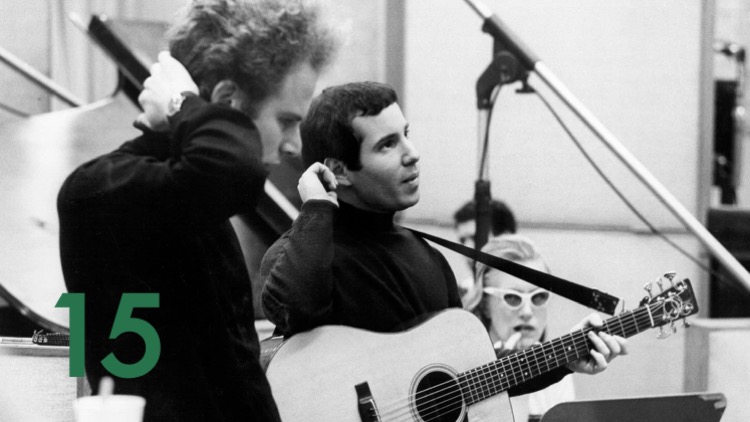

With 1968’s Bookends, Paul Simon and Art Garfunkel crafted an intricate song cycle centered around the concept of aging. Only in their mid-twenties at the time, the record was a remarkably nuanced meditation on mortality – perhaps surprising to those who mostly knew of the folk duo from their contributions to that year’s The Graduate, whose theme song, “Mrs. Robinson,” was somewhat crassly appended toward the conclusion of Bookends‘ track list. The record’s pivotal song – and Paul Simon’s masterpiece – proved to be something of an elegy for youthful naiveté that simultaneously struck a chord for a nation in crisis.
Bookends was released on April 3, 1968. Within thirty-six hours of the album’s arrival, Martin Luther King, Jr. laid dead in Memphis, Tennessee, cut down in an act of violence that – for many – called into question the very notion of non-violent direct action. Almost immediately, dozens of American cities would erupt in the largest demonstration of civic unrest since the Civil War. Seven months later – following an interval that included the assassination of Robert F. Kennedy, and rioting at the Democratic National Convention in Chicago – Richard Nixon was elected president of the United States. In that instant, for countless young Americans, the dream of the sixties was dead.
Simon had written “America” well before this turn of events – largely inspired by a 1964 road trip taken with then-girlfriend Kathy Chitty. The song detailed a decidedly “middle class intellectual” sense of ennui: bookish – or precious – in the way that attracted and repelled listeners from Simon’s work in somewhat-equal measure. Amid a waltzy time signature and calliope melody, Simon sets the hook:
Let us be lovers, we’ll marry our fortunes together
I’ve got some real estate here in my bag
So we bought a pack of cigarettes and Mrs. Wagner pies
And walked off to look for America
From there, the song grows increasingly cinematic, bolstered by the cavernous drum work of Hal Blaine, but undercut by an undeniable sense of melancholy. The central conceit – “looking for America” – is immediately identifiable in both its literal and metaphoric senses, and one must have found it utterly prescient as they first heard the song amid the near-constant turmoil of 1968.
That juxtaposition of a fanciful youthful ideal with a harsh reality rings similarly true, over fifty years after the song’s introduction to the world. Personally, for the past five or so years, I’ve felt little short of transfixed by it. However, where one can easily connect the political and social tumult of the late sixties to that of the past several years, it has been the last verse – one largely devoid of any greater sociopolitical importance – that stands as its most haunting. It’s only as his traveling companion has nodded off that Simon can communicate without barriers, and in that moment, he realizes just how commonplace his ailment is:
“Kathy, I’m lost”, I said, though I knew she was sleeping
I’m empty and aching and I don’t know why
Counting the cars on the New Jersey Turnpike
They’ve all come to look for America
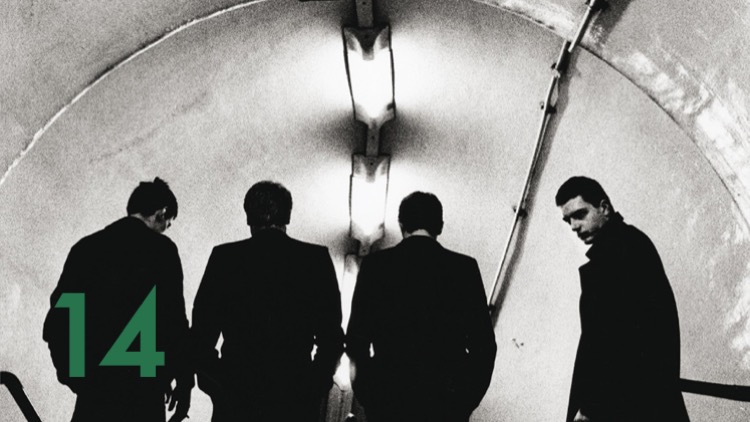

Ian Curtis battled formidable demons prior to his death by suicide at the age of twenty-three. While the tragedies of Curtis’ biography formed a considerable part of the legacy that he built over the course of three short years as the frontman of Joy Division, the song that stands at the center of that legacy is nothing short of an absolute triumph.
Nearly everything that had made Joy Division such a compelling band on their 1979 debut Unknown Pleasures remains intact on “Love Will Tear Us Apart”: Stephen Morris’ steady, dance-inspired backbeat; Peter Hook’s melodic bass line; Bernard Sumner’s atmospheric keyboard/guitar work; Martin Hannett’s spacious, trailblazing production; and Curtis’ arresting vocal performance that straddles the line between burning passion and cold detachment. That juxtaposition between cold and warmth – displayed in the sounds, lyrics, and ambience – is what separated great Joy Division songs from greater Joy Division songs, and clearly, no track in the Manchester group’s all-too-brief catalog trades in this dichotomy more affectingly than “Love Will Tear Us Apart.”
When merely viewed as a simple pop song, “Love Will Tear Us Apart” is stunning. Whereas Joy Division’s previous hooks were staggered, hardened jabs with a percussive edge, the main melodic figure of “Love Will Tear Us Apart” is delicate, ethereal, and so haunting that one hardly cares that it is employed by every member of the band, save for Morris. I distinctly remember a chance encounter with the song as a kid, sometime in the winter of 1987-88 – one that stuck with me for at least a decade before I found out who had performed it. I’ve written before about the sublimity that can happen when an experimental or “difficult” band finally embraces their pop side, and there is no more ravishing example of this than “Love Will Tear Us Apart.”
Of course, even though it is catchy, this is no simple pop song. Among the final tracks that Joy Division ever recorded, “Love Will Tear Us Apart” was essentially a farewell from a broken man. A year-and-a-half before his death, Ian Curtis had been diagnosed with epilepsy. As his grand mal seizures became more frequent and intense, Curtis’ doctors prescribed him increasingly heavy doses of medication. This treatment would only deepen the mood swings, depression, and anxiety that Curtis had already suffered for years. He became concerned about Joy Division’s increasing fame, and the attention that it would bring to his epileptic fits – which had become a growing concern during live performances. More importantly, he was growing further estranged from his wife Deborah – who he had married at age 19 in 1975 – and deeply conflicted by the tension caused from his intense-but-platonic relationship with journalist Annik Honoré.
It’s that storm of emotion, trauma, and heartache that reverberates throughout each note of “Love Will Tear Us Apart.” Within days of recording the song, Curtis unsuccessfully attempted suicide. Six weeks later, he was dead – hanged in the kitchen of his and Deborah’s modest home in Cheshire, the day before Joy Division were to depart England for their first American tour. One month later, his greatest song would be released, serving as a fitting elegy to his tragically brief life.
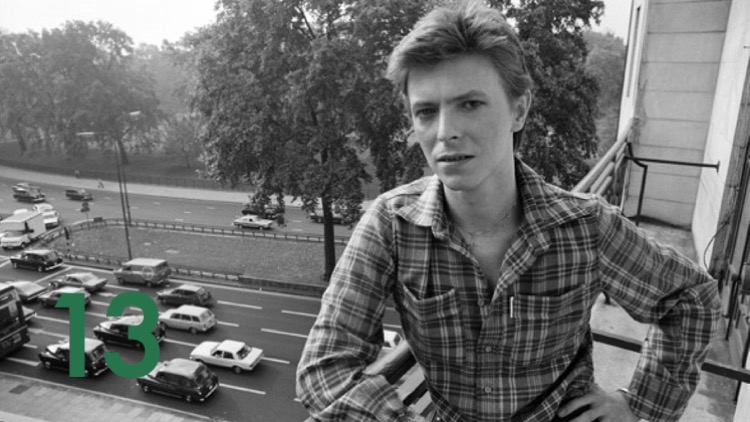

David Bowie famously decamped for Berlin in 1976, largely in an effort to kick the addiction to cocaine that had put his physical and mental health in serious jeopardy. In addition to the personal rejuvenation that this exile provided, Bowie also entered what may have been the most boldly innovative phase of his career with the so-called Berlin Trilogy of albums.
It was the title track to the middle piece of that storied trilogy that was most directly inspired by Bowie’s residency in the notoriously divided city. Specifically, it was a romantic tryst that Bowie witnessed alongside the Berlin Wall, from his vantage point inside Hansa Studio by the Wall, that led him to write “Heroes.” One half of that tryst was Bowie’s friend and long-time producer, Tony Visconti. The other half was backing vocalist Antonia Maass. The forbidden nature of their affair – Visconti was married to the well-known singer Mary Hopkin at the time – helped to give Bowie’s lyrics a deeper sense of urgency.
That urgency was underscored by what may be Bowie’s greatest performance – one of the most hair-raising vocal takes in the history of recorded music. As the song progresses, Bowie’s initially measured presence becomes increasingly frenzied, intense, and desperate. This was further emphasized by Visconti’s production work, which pushed Bowie’s vocals deeper into the mix from verse-to-verse. By track’s end, he is essentially screaming the final verse and refrain, just to get through at all.
The desperation of Bowie’s vocal work is accompanied by a musical backing that is equally goosebump-inducing. The mechanical/human dichotomy that Bowie, Visconti, and Brian Eno had explored on 1977’s brilliant Low was deepened on “Heroes.” The almost clinical rhythm track is complemented by a dramatic, soaring guitar lead by King Crimson guitarist, and frequent Eno collaborator, Robert Fripp – an oft-copied performance that helped to make the song particularly “heroic.”
From the late-sixties until his death in 2016, David Bowie carved out one of the most miraculous bodies of work in all of popular music. Despite his continued relevance, there was something deeply remarkable – and unassailable – about his studio output of the seventies. For all of its brilliance, charm, and innovation, no moment in that decade’s worth of work quite matches this utterly arresting peak.
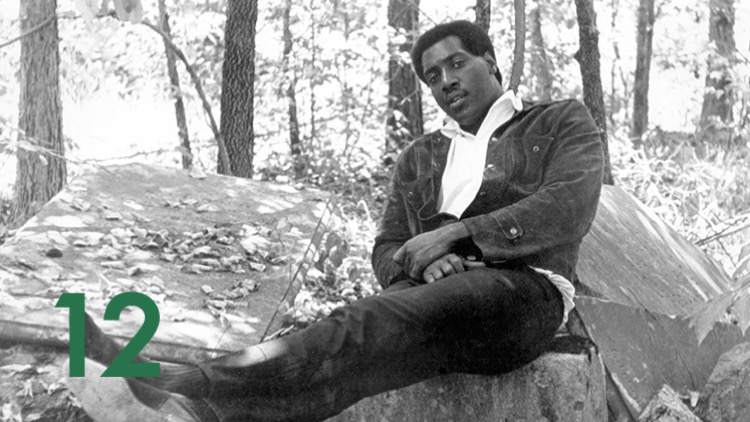

One of the most sublimely laid-back recordings of all-time, Otis Redding’s masterpiece was actually the end result of a great deal of work – work that remained unfinished in its creator’s eyes, but that would ultimately place the song at the top of the American pop charts in early 1968.
Redding began writing “(Sittin’ On) The Dock of the Bay” during a brief break in touring over the summer of 1967. Coming off of his triumphant performance at the Monterey Pop Festival, Redding was in a reflective mood, and eager to take his sound in a new direction. Inspired by a scene similar to that of the song’s lyrics, “Dock of the Bay” found him wrestling with the weight of fame and expectations, but coping by taking in the tranquil surroundings around him.
That emotional complexity was coaxed to life with help from Steve Cropper – guitarist of Booker T. & The M.G.’s, and a frequent collaborator of Redding’s. Cropper assisted Redding in the writing of “Dock of the Bay” – taking it from a loose concept to a fully-realized piece – and it is his unmistakable guitar work that provides the song with its most interesting instrumental component.
Cropper and Redding entered Stax Studios in Memphis to record “Dock of the Bay” on November 22, 1967, alongside members of The M.G.’s and The Memphis Horns. On December 7, they added overdubs to the song, which Redding still felt was incomplete. This unfinished nature is best represented by the track’s final seconds: an improvised take of Redding whistling, in place of a final verse. It mattered little to Redding. He considered the recording to merely be a first pass at a song that he would return to later.
That chance would never come. Three days later – on December 10th – Otis Redding was killed in a plane crash outside of Madison, Wisconsin, along with the plane’s pilot and four of his bandmates. Redding’s body was pulled from the freezing waters of Lake Monona the next day, and laid to rest in his hometown of Macon, Georgia a week later.
When it was released on January 8, 1968, the recording that Redding and Cropper had halted work on a month prior took on an eerie prescience. In particular, it was the carefree sound of Redding’s whistling that served as a fitting ending to a project – and a life – cut short. While the life, and life’s work, of Otis Redding had come to a tragically abrupt ending, his final statement – whether finished or not – could not have been more perfectly realized.
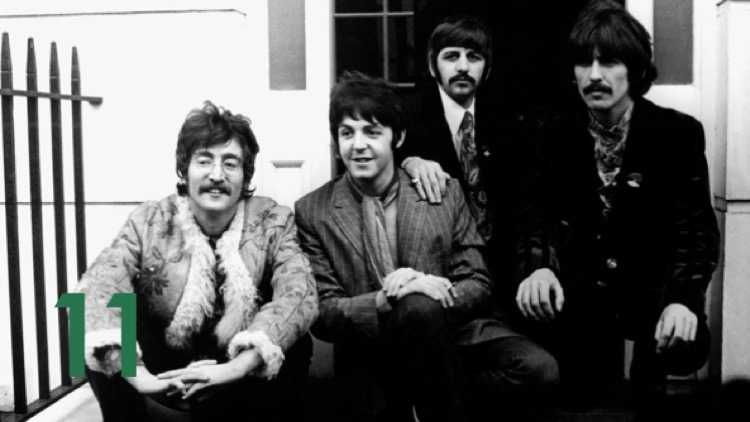

In the winter of 1966-67, the four members of The Beatles entered EMI’s Abbey Road studio with a deepened commitment to their craft. Though they had already taken their music in a previously unimaginable range of directions on 1966’s brilliant Revolver, the work that they were about to embark upon would display an attention to detail that was nothing short of breathtaking. The first fruits of that labor came in the form of a game-changing double A-side single: one half dedicated to Paul McCartney’s shimmering gem “Penny Lane” (#115), and the other to John Lennon’s wistful, mesmerizing “Strawberry Fields Forever.”
Inspired by a Salvation Army children’s home near the childhood residences of Lennon and McCartney, “Strawberry Fields Forever” taps into the youthful whimsy that was central to the heart of British psychedelia. Lennon’s lyrics are initially abstract, surrealistic snapshots, but they ultimately work to create a wholistic mood of bittersweet introspection. Even in its stripped-down demo form, “Strawberry Fields” is arresting in its combination of imagery and melody.
Where the song truly enters rarified air is in its remarkable arrangement and production. I have frequently discussed my love of the Mellotron over the preceding 990 entries on this list, but no song better displays the capabilities of my favorite instrument than this one – the track that first introduced it to the wider world. McCartney’s introduction – using the Mellotron’s flute setting – was instantly iconic, but the song also employs several more of the revolutionary instrument’s sounds to stunning effect.
With the addition of cellos, trumpets, and an Indian harp known as a swarmandal, the finished “Strawberry Fields Forever” was an intoxicating mix of sounds, both traditional and modern. This juxtaposition came off as wholly natural, thanks in large part to a herculean production effort by George Martin. Alongside his trusted engineer, Geoff Emerick, Martin utilized a host of studio tricks to achieve the final version of “Strawberry Fields”: including backmasking, tape loops, and a tricky edit that merged two radically different takes of the track.
Released as a teaser in advance of their culture-shifting 1967 album, Sgt. Pepper’s Lonely Hearts Club Band, “Strawberry Fields” masterfully displayed The Beatles’ rechristening as a studio-only act. Its impact on the contemporary music scene was immediate, seismic, and long-lasting, but at the end of the day, “Strawberry Fields Forever” is simply a stunning piece of pop genius from a group with no peers, operating at the peak of their powers.

